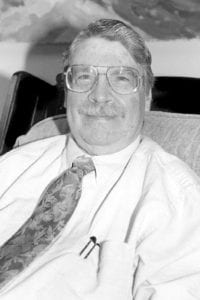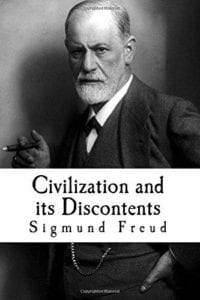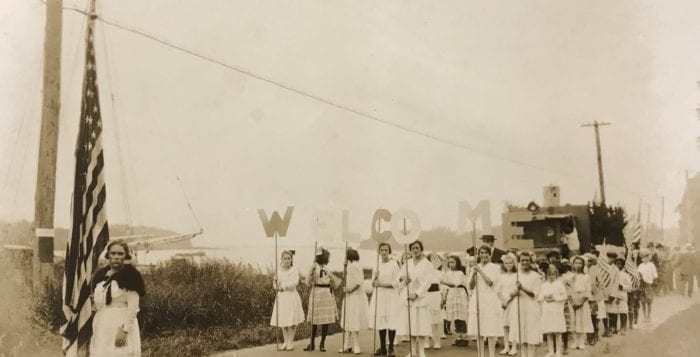By Charles Morgan
“Der Krieg ist vorbei.” “La guerre est finie.” “The damned thing is ended.” “Let’s git the hell home.”
So it was 100 years ago on Nov. 11, 1918, at 11 a.m. that World War I, the most destructive war in the world at the time, was over. The Germans, French, Austrian-Hungarians, Italians, Turks, British and Americans, among others, had stopped shooting at one another; the Russians had ceased the previous year.
At this single juncture, several empires had fallen: the Hohenzollern of Germany, the Romanov of Russia by internal Communist revolution, the Habsburg of Austria and the Ottoman of Turkey. Even the victors suffered. The British Empire was all but broke; France was gutted; and the United States was becoming aloof as it entered the Roaring Twenties with most people not knowing what the Treaty of Versailles in 1919 was all about. However, there were four more, known as the suburban treaties: St. Germain with Austria, Neuilly with Bulgaria, Trianon with Hungary and Sèvres with Ottoman Turkey. This last one had to be renegotiated at Lausanne in Switzerland in 1923.
Germany had to give up Alsace-Lorraine which it had taken from France in 1870. The Germans were limited to an army no larger than 100,000 men and a navy with manpower not exceeding 15,000, possessing only a limited fleet and absolutely no submarines. There was to be no air force.
Two countries were literally invented. Parts of the Habsburg Empire with Bohemia, Moravia and Slovakia became Czecho-Slovakia. In the Balkans, the Paris peacemakers instituted the Kingdom of Serbs, Croats and Slovenes, later mercifully shortened to Yugoslavia.
The famous T.E. Lawrence of Arabia had helped unify the various desert tribes in the Arab Revolt against the Turkish armies. King Faisal I of Iraq assumed he would be king of it all, but saw his plan nullified by the secret 1916 Sykes-Picot Agreement, which enabled France to take over Syria and Lebanon among other countries, while Britain established protectorates over Palestine and Transjordan. These were called mandates. Eventually, in 1932, a large piece of desert land would be called the Kingdom of Saudi Arabia. The viscous black fluid that soiled the camels’ hooves was to be the future of “the Middle East.”
Disarmament was the outcry, and it engendered a series of treaties the first of which was the Washington Naval Conference of 1921-22. The United States, Britain, Japan, France, Italy and others hammered out a treaty severely limiting construction of warships. It referred mainly to battleships, leaving little consideration of cruisers and aircraft carriers. In effect, this was the first arms-control conference in history. A small coterie of American and Japanese admirals held that aircraft carriers would be the strategic naval weapon of the future — a point disastrously proven Dec. 7, 1941, at Pearl Harbor.
Then came Benito Mussolini. In 1922, he and his followers, called Fascisti, gathered in Rome, allowing King Victor Emmanuel III to remain on the throne, but with Mussolini as Il Duce. His navy was to dominate the Mediterranean, with its state-of-the-art battleships such as the Vittorio Veneto; the Condottieri-class cruisers with flowing names like Eugenio di Savoia; and speedy Soldati-class destroyers. Yet when the Italians clashed with the British Royal Navy as early as 1936 in the Spanish Civil War and later battles, they revealed a lack of leadership as did the land forces.
The fighting had not stopped. The 1918 Treaty of Brest-Litovsk, which took Russia out of the war also ushered in communism. The Spartacists violently took over Bavaria, calling it the People’s State of Bavaria. Demobilized German soldiers made short work of this nascent Communist effort. At the same time, now-Communist Russia under Lenin sent the Red Army into Poland under Marshal Mikhail Tukhachevsky.
In 1920, the Russians pushed back the Poles all the way to the gates of Warsaw. But then came the “Miracle on the Vistula,” when Polish Marshal Józef Pilsudski sent the Reds reeling back to Russia. The Poles, therefore, became the first ever to defeat the Red Army in the field of battle. In 1919 Hungarian revolutionary Béla Kun fomented the Communist revolution in Budapest which was put down by the forces of Regent Miklós Horthy. By 1926, Mustafa Kemal Atatürk in Turkey, who had abolished the caliphate, was making changes designed to convert the country into a secular republic, including taking fezzes and turbans off the men, and introducing the Latin alphabet.
On that November day in 1918 an Austrian corporal, recovering from wounds in a field hospital and sporting a sizable imperial handlebar mustache — later trimmed to a Chaplinesque toothbrush — as well as the Iron Cross 1st Class, was mulling over in the darkest recesses of his mind, a way to avenge Germany’s defeat brought about by the “November Criminals.” His name was Adolf Hitler.
Charles Morgan is a freelance writer from Stony Brook, and gives a personal view of the aftermath of World War I.






 Freud introduces the source of the tensions between creativity and destructiveness. He assigns it to the id/superego conflict. I would use instead our capacity for love, empathy and sympathy versus our capacity for hate, bigotry and violence. Freud calls the process sublimation. He began writing this book in 1929 and published it two years later. He predicted that the rise of Nazism was imminent and would lead to massive death because humanity does not know how to sublimate its discontents into the path of the joys of civilization — its arts, humanity, play and immense scholarship.
Freud introduces the source of the tensions between creativity and destructiveness. He assigns it to the id/superego conflict. I would use instead our capacity for love, empathy and sympathy versus our capacity for hate, bigotry and violence. Freud calls the process sublimation. He began writing this book in 1929 and published it two years later. He predicted that the rise of Nazism was imminent and would lead to massive death because humanity does not know how to sublimate its discontents into the path of the joys of civilization — its arts, humanity, play and immense scholarship.  This is my favorite novel. It is the story of a young French boy raised by a devout Catholic family who thinks he will become a priest. He discovers instead that the more he learns the more doubts arise not only about his calling but his faith. He teaches biology and is fired for teaching evolution. His wife and daughter separate from him. He throws himself into the Freethinkers movement in France and gets involved in the Dreyfus case. He discovers that reason alone cannot sustain his life but returning to his faith is equally inadequate.
This is my favorite novel. It is the story of a young French boy raised by a devout Catholic family who thinks he will become a priest. He discovers instead that the more he learns the more doubts arise not only about his calling but his faith. He teaches biology and is fired for teaching evolution. His wife and daughter separate from him. He throws himself into the Freethinkers movement in France and gets involved in the Dreyfus case. He discovers that reason alone cannot sustain his life but returning to his faith is equally inadequate.  Montaigne’s essays describe his life and the times in which he lived in the context of a rich appreciation of classical literature. He tries to make sense of a world that is pretentious, at war with itself and filled with irony, contradictions and lessons we can extract from the past. Read a 20th-century translation of these essays rather than the 16th-century English translation. Start with his essay on friendship and his essay: “How by various means we all end at the same place.”
Montaigne’s essays describe his life and the times in which he lived in the context of a rich appreciation of classical literature. He tries to make sense of a world that is pretentious, at war with itself and filled with irony, contradictions and lessons we can extract from the past. Read a 20th-century translation of these essays rather than the 16th-century English translation. Start with his essay on friendship and his essay: “How by various means we all end at the same place.” I loved reading Pepys’s diaries and was thrilled that he was an eyewitness to the bubonic plague that swept through England in 1665 and the London fire that destroyed most of the city in 1666. Pepys is an imperfect person — not immune to accepting sacks of gold for awarding contracts for the British Navy, flirting with other women but loving his wife and learning to avoid threats to his career from others drawn to the politics of the time.
I loved reading Pepys’s diaries and was thrilled that he was an eyewitness to the bubonic plague that swept through England in 1665 and the London fire that destroyed most of the city in 1666. Pepys is an imperfect person — not immune to accepting sacks of gold for awarding contracts for the British Navy, flirting with other women but loving his wife and learning to avoid threats to his career from others drawn to the politics of the time. Darwin is an excellent observer and narrator. He wrote this book as an abstract of a huge multivolume plan for presenting his theory of evolution of species by natural selection. He is careful to distinguish evidence from theory and uses the facts to derive his interpretations of how evolution works. Darwin did not start with a theory and then seek facts to support it. He went with no idea about evolution and instead allowed the hundreds of observations and findings guide him to the only interpretation that made sense of the relations he found whether it was the work of hobbyists and breeders creating new varieties of plants and animals, the geographic distribution of plants and animals he encountered in his trip around the world, or the fossils he encountered.
Darwin is an excellent observer and narrator. He wrote this book as an abstract of a huge multivolume plan for presenting his theory of evolution of species by natural selection. He is careful to distinguish evidence from theory and uses the facts to derive his interpretations of how evolution works. Darwin did not start with a theory and then seek facts to support it. He went with no idea about evolution and instead allowed the hundreds of observations and findings guide him to the only interpretation that made sense of the relations he found whether it was the work of hobbyists and breeders creating new varieties of plants and animals, the geographic distribution of plants and animals he encountered in his trip around the world, or the fossils he encountered. 
































